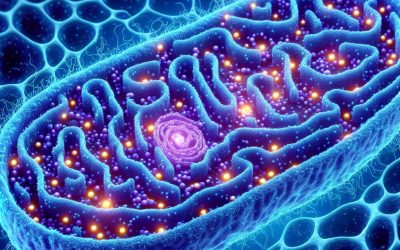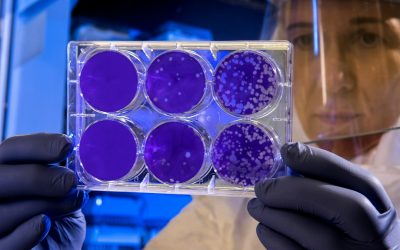Explore the World Through Geography, Natural Resources & Daily History
Clear, reliable and engaging guides that help you understand our planet — from UK geography education to global natural resources and On This Day history events.
Explore, discover, and learn about the wonders of our world! At Earth Site, we’re passionate about bringing geography, history, and science to life for curious minds of all ages. Whether you’re delving into historical events, uncovering the mysteries of the natural world, or seeking interactive resources, you’re in the right place.
Here, you can uncover the stories behind historical events, explore the natural wonders of our planet, and gain valuable insights into how the Earth’s systems shape our daily lives. From the towering peaks of mountain ranges to the far-reaching impacts of human innovation, we aim to make every topic both engaging and informative.
Start your journey of discovery with us today, and let’s make learning an adventure!
What We Cover
Earth Site brings together engaging and accessible educational content designed to help you understand the world, its history, and its natural systems.
🌍 Geography Education (UK & Worldwide)
We publish clear, easy-to-understand geography resources for students, teachers and curious learners. Our guides support geography education in the UK and cover physical geography, climate, ecosystems, population, and global development.
⛏️ Natural Resources & Environmental Geography
Explore detailed country profiles covering natural resources, mining, energy, geology and global environmental challenges. We show how nations manage minerals, water, land and ecosystems, and why these resources matter.
📅 On This Day in History
Every day has a story. Our On This Day history series features major events, anniversaries, traditions, and cultural milestones from around the world — with timelines, context, and fun facts.
TIMELINE
Unlocking the Power of Statistical Tests: How to Make Data-Driven Decisions
Statistical tests are a crucial component of data analysis. They are used to determine whether there is a significant difference or relationship between variables in a dataset. Statistical tests provide a way to make objective and evidence-based conclusions from data, helping researchers and analysts draw meaningful insights. In simple terms, statistical tests involve comparing observed data to what would be expected by chance alone. By doing so, they help determine whether the observed results are statistically significant or if they could have occurred by random chance. This allows researchers to make inferences about the population from which the data was collected. Statistical tests are important because they provide a rigorous and systematic approach to analyzing data. They help researchers make informed decisions, draw valid conclusions, and avoid making false claims based on anecdotal evidence or personal biases. Statistical tests also allow for the replication of research findings, as they provide a standardized method for analyzing data that can be used by other researchers in the field. Key Takeaways Statistical tests are important tools for analyzing data and making informed decisions. There are different types of statistical tests, each with its own purpose and appropriate use. Hypothesis testing is a key component of statistical analysis, allowing us to draw conclusions about data. Choosing the right statistical test for your data requires careful consideration of variables and research questions. Conducting statistical tests involves following a step-by-step process and interpreting results accurately. Understanding the Different Types of Statistical Tests and When to Use Them There are various types of statistical tests, each designed for different types of data and research questions. Two...
Smooth Sailing: Exploring the Functions and Importance of the Endoplasmic Reticulum
The endoplasmic reticulum (ER) is a complex network of membranous tubules and sacs that are found in eukaryotic cells. It is one of the most important organelles in the cell, playing a crucial role in various cellular processes. The ER is involved in protein synthesis, lipid metabolism, calcium homeostasis, drug metabolism, and the immune response, among other functions. The structure of the endoplasmic reticulum is highly dynamic and can vary depending on the cell type and its specific functions. There are two main types of ER: rough endoplasmic reticulum (RER) and smooth endoplasmic reticulum (SER). The RER is characterized by the presence of ribosomes on its surface, giving it a rough appearance under a microscope. The SER, on the other hand, lacks ribosomes and appears smooth. Both types of ER are interconnected and work together to carry out their respective functions. The endoplasmic reticulum is essential for the survival and proper functioning of the cell. It serves as a site for the synthesis of proteins and lipids, as well as for the storage and release of calcium ions. Additionally, it plays a crucial role in maintaining cellular homeostasis by regulating various cellular processes. Without the endoplasmic reticulum, cells would not be able to function properly and would be unable to carry out essential processes necessary for their survival. Key Takeaways The endoplasmic reticulum (ER) is a complex network of membranes found in eukaryotic cells. There are two types of ER: rough ER, which is studded with ribosomes and involved in protein synthesis, and smooth ER, which is involved in lipid metabolism and calcium homeostasis. The ER plays a crucial...
Exploring the Intricacies of the Rough Endoplasmic Reticulum: A Journey into Cellular Biology
The rough endoplasmic reticulum (RER) is a vital organelle found in eukaryotic cells. It plays a crucial role in various cellular processes, including protein synthesis, folding, and transport. The RER is characterized by its rough appearance due to the presence of ribosomes on its surface. These ribosomes are responsible for the synthesis of proteins that are destined for secretion or insertion into the cell membrane. The RER is essential for maintaining cellular homeostasis and is involved in intercellular communication. Understanding the structure and function of the RER is crucial for advancing our knowledge of cellular processes and developing new treatments for diseases. Key Takeaways The Rough Endoplasmic Reticulum (ER) is a complex network of membranes that plays a crucial role in protein synthesis and folding. The ER is involved in cellular communication and the secretory pathway, which allows cells to secrete proteins and other molecules. The ER works closely with the Golgi apparatus to transport and modify proteins before they are released from the cell. The ER is involved in cellular stress responses and can contribute to the development of diseases if not functioning properly. Research on the ER is ongoing and has the potential to lead to new discoveries and applications in the future. The Rough Endoplasmic Reticulum: An Overview of Its Structure and Function The rough endoplasmic reticulum is a network of interconnected membranous tubules and sacs called cisternae. It is located near the nucleus and extends throughout the cytoplasm of the cell. The RER is characterized by its rough appearance due to the presence of ribosomes attached to its surface. These ribosomes are responsible for protein...
Exploring the Fascinating World of Probability Distributions: Understanding the Basics and Applications
Probability distributions are a fundamental concept in statistics and data science. They provide a way to describe the likelihood of different outcomes or events occurring in a given situation. In simple terms, a probability distribution is a mathematical function that assigns probabilities to different outcomes of a random variable. Probability distributions play a crucial role in statistics and data science because they allow us to make predictions and draw conclusions based on data. By understanding the underlying probability distribution of a dataset, we can analyze and interpret the data more effectively. Probability distributions also provide a framework for making decisions under uncertainty and assessing risk. To understand probability distributions, it is important to be familiar with some basic concepts and terminology. A random variable is a variable whose value is determined by chance or randomness. It can take on different values, each with a certain probability. The set of all possible values that a random variable can take is called the sample space. The probability of each value in the sample space is given by the probability distribution. Key Takeaways Probability distributions are mathematical functions that describe the likelihood of different outcomes in a random event. There are two types of probability distributions: discrete and continuous. The probability density function (PDF) and cumulative distribution function (CDF) are important tools for understanding probability distributions. Common probability distributions include the normal, Poisson, binomial, and Bernoulli distributions. Probability distributions have many real-life applications, including in finance, engineering, and healthcare. Types of Probability Distributions: Discrete and Continuous There are two main types of probability distributions: discrete and continuous. Discrete probability distributions are used...
Exploring the Vibrant Culture and Breathtaking Landscapes of Brazil
Brazil is a country known for its vibrant culture, rich history, and diverse landscapes. From the bustling streets of Rio de Janeiro to the vast Amazon Rainforest, Brazil offers a unique and unforgettable experience for travelers. In this blog post, we will take a journey through Brazil’s rich cultural heritage, exploring its history, architecture, festivals, art, cuisine, natural wonders, adventure sports, and warm hospitality. By the end of this article, you will have a deeper understanding of what makes Brazil such a fascinating and captivating destination. Key Takeaways Brazil has a rich cultural heritage that spans centuries and includes influences from indigenous tribes, European colonizers, and African slaves. Brazilian architecture is a marvel to behold, with styles ranging from colonial to modern and featuring iconic landmarks like the Christ the Redeemer statue in Rio de Janeiro. Brazilian festivals and celebrations are colorful and lively, with Carnival being the most famous and attracting millions of visitors each year. Brazil is home to a vibrant artistic scene, with music, dance, and visual arts that showcase the country’s diverse cultural influences. Brazilian cuisine is a gastronomic adventure, with dishes that range from traditional feijoada to modern fusion cuisine that incorporates local ingredients and flavors. Brazil’s Rich Cultural Heritage: A Journey Through Time Brazil’s cultural heritage is deeply rooted in its history. The country has been inhabited by indigenous tribes for thousands of years, and their influence can still be seen today. These tribes have left behind a legacy of art, music, dance, and spirituality that is an integral part of Brazilian culture. The arrival of the Portuguese in the 16th century marked...
Exploring the Intricacies of the Endoplasmic Reticulum: A Journey into the Cellular World
The endoplasmic reticulum (ER) is a complex and dynamic organelle found in eukaryotic cells. It plays a crucial role in various cellular processes, including protein synthesis and folding, lipid metabolism, calcium signaling, cellular stress responses, autophagy, and cell-to-cell communication. The ER is composed of a network of interconnected tubules and flattened sacs called cisternae. It is divided into two main types: the rough endoplasmic reticulum (RER) and the smooth endoplasmic reticulum (SER). The RER is characterized by the presence of ribosomes on its surface, giving it a rough appearance under the microscope. It is primarily involved in protein synthesis and folding. The ribosomes on the RER synthesize proteins that are destined for secretion or insertion into the cell membrane. As the proteins are synthesized, they enter the lumen of the RER where they undergo folding and post-translational modifications. The RER also plays a role in quality control, ensuring that only properly folded proteins are allowed to leave the ER. On the other hand, the SER lacks ribosomes on its surface and is involved in various metabolic processes, including lipid metabolism, detoxification of drugs and toxins, and calcium storage. The SER is responsible for synthesizing lipids, such as phospholipids and cholesterol, which are essential components of cell membranes. It also plays a role in detoxifying harmful substances by modifying them to make them more water-soluble and easier to excrete from the cell. Additionally, the SER acts as a calcium reservoir, storing calcium ions that are important for various cellular processes. Key Takeaways The endoplasmic reticulum (ER) is a complex organelle with multiple functions in the cell. The ER plays a...
Unleashing the Power of Quantum Chemistry: Exploring the Fascinating World of Molecular Science
Quantum chemistry is a branch of chemistry that focuses on the application of quantum mechanics to understand and predict the behavior of molecules and chemical reactions. It involves the use of mathematical models and computational methods to study the electronic structure and properties of atoms and molecules. Understanding the fundamentals of quantum chemistry is crucial for advancing our knowledge in various fields, including drug discovery, material science, and industry. Summary Quantum chemistry is the study of the behaviour of atoms and molecules using quantum mechanics. Molecular science involves the study of the properties and behaviour of molecules. Quantum mechanics revolutionised molecular science by providing a more accurate understanding of atomic and molecular behaviour. Quantum chemistry has numerous applications, including drug discovery, material science, and chemical manufacturing. The future of quantum chemistry is full of exciting possibilities and opportunities, but there are also challenges and limitations that must be addressed. The Fascinating World of Molecular Science Molecular science is the study of molecules, which are the building blocks of matter. It encompasses a wide range of disciplines, including chemistry, physics, biology, and materials science. By studying molecules, scientists can gain insights into their structure, properties, and interactions, which can then be applied to various fields. Studying molecules is important because they play a crucial role in many natural and synthetic processes. For example, understanding the structure and function of biological molecules such as proteins and DNA is essential for advancing our knowledge in biology and medicine. Similarly, studying the properties of materials at the molecular level can lead to the development of new materials with improved properties. The Emergence of...
Revolutionizing Healthcare and Manufacturing: The Impact of Applications in Medicine and Industry
Technology has become an integral part of our lives, transforming various industries and revolutionizing the way we live and work. Two sectors that have seen significant advancements due to technology are healthcare and manufacturing. The integration of applications and software has brought about a multitude of benefits, improving patient care, enhancing manufacturing processes, and increasing efficiency. In this article, we will explore the role of technology in these industries, focusing on advancements in medical imaging and diagnostics, robotics and automation in manufacturing, the importance of data analytics, personalized medicine, the evolution of 3D printing, cybersecurity, and the future opportunities and challenges in healthcare and manufacturing. Summary Applications are revolutionizing healthcare and manufacturing industries. Technology plays a crucial role in the healthcare industry. Advancements in medical imaging and diagnostics are improving patient outcomes. Robotics and automation are transforming the manufacturing industry. Data analytics is essential for improving healthcare and manufacturing processes. The Role of Technology in the Healthcare Industry Technology plays a crucial role in improving patient care and enhancing healthcare services. With the help of applications and software, healthcare professionals can streamline their processes, reduce errors, and provide better treatment options for patients. Electronic Health Records (EHRs) have become a standard practice in healthcare facilities, allowing doctors to access patient information quickly and efficiently. This not only saves time but also improves accuracy in diagnosis and treatment. Another significant advancement in healthcare technology is telemedicine. Telemedicine allows patients to consult with doctors remotely through video calls or online platforms. This is particularly beneficial for patients who live in remote areas or have limited access to healthcare facilities. Telemedicine has...
Unravelling the Mystery: Understanding Reaction Mechanisms in Chemical Reactions
Chemistry is the study of matter and the changes it undergoes. At the heart of chemistry lies the understanding of chemical reactions and their mechanisms. A reaction mechanism is a step-by-step sequence of elementary reactions that leads to the overall transformation of reactants into products. Understanding reaction mechanisms is crucial in various fields, including pharmaceuticals, materials science, and environmental science. In pharmaceuticals, for example, understanding reaction mechanisms is essential for drug discovery and development. By knowing how a drug interacts with its target molecule, scientists can design more effective and selective drugs. In materials science, understanding reaction mechanisms is important for synthesizing new materials with desired properties. And in environmental science, understanding reaction mechanisms helps in predicting and mitigating the impact of chemical reactions on the environment. Summary Understanding reaction mechanisms is crucial for predicting and controlling chemical reactions. Chemical reactions involve the breaking and forming of chemical bonds, and reaction mechanisms describe the steps involved in this process. Different types of chemical reactions have different mechanisms, such as substitution, addition, and elimination reactions. Catalysts can speed up reactions by providing an alternative reaction pathway with lower activation energy. Experimental techniques such as spectroscopy and chromatography can be used to investigate reaction mechanisms and kinetics. The Fundamentals of Chemical Reactions and Reaction Mechanisms A chemical reaction is a process that leads to the transformation of one set of chemical substances to another. It involves the breaking and forming of chemical bonds. A reaction mechanism, on the other hand, describes the individual steps that occur during a chemical reaction. A reaction mechanism typically consists of three main steps: initiation, propagation,...
Nucleus: The Central Command of the Cell – Understanding its Importance in Biology
The nucleus is a vital component of eukaryotic cells, serving as the control center that regulates all cellular activities. It is a membrane-bound organelle that contains the genetic material of the cell, including DNA and RNA. The nucleus plays a crucial role in cell function, as it is responsible for regulating gene expression, controlling cell division, and maintaining genetic information. Key Takeaways The nucleus is the control center of the cell, responsible for regulating cellular activities. The nucleus is composed of DNA, RNA, and proteins, and is surrounded by a nuclear envelope. The nucleus plays a crucial role in DNA replication, transcription, and translation. The nucleolus is responsible for ribosome synthesis, which is essential for protein production. The nucleus is involved in cell division and differentiation, and dysfunction can lead to various health issues. The Structure and Composition of the Nucleus The nucleus is surrounded by a double-layered membrane called the nuclear envelope. This envelope separates the contents of the nucleus from the rest of the cell and contains nuclear pores that allow for the exchange of molecules between the nucleus and cytoplasm. Within the nucleus, there are various components, including chromatin, nucleolus, and nucleoplasm. Chromatin is a complex of DNA and proteins that make up the chromosomes. It is responsible for packaging and organizing the genetic material within the nucleus. The nucleolus is a distinct region within the nucleus where ribosomes are synthesized. It plays a crucial role in protein synthesis. The nucleoplasm is a gel-like substance that fills the space between the nuclear envelope and chromatin. The Functions of the Nucleus in the Cell The nucleus performs...
Crunching the Numbers: Understanding Mean, Median, and Mode in Statistics
In statistics, central tendency refers to the measure that represents the center or typical value of a dataset. It provides a summary of the data by identifying a single value that best represents the entire dataset. The three most commonly used measures of central tendency are mean, median, and mode. The mean, also known as the arithmetic average, is calculated by summing up all the values in a dataset and dividing it by the total number of values. It is widely used in statistics because it takes into account every value in the dataset and provides a balanced representation of the data. Key Takeaways Mean, median, and mode are measures of central tendency used to describe a set of data. Mean is the arithmetic average of a set of numbers, calculated by adding them up and dividing by the total number of values. Median is the middle value in a set of numbers when they are arranged in order, and is not affected by extreme values. Mode is the most frequent value in a set of numbers, and can be used for categorical data as well as numerical data. Mean, median, and mode can be used to compare different sets of data, but it is important to consider the context and distribution of the data. Calculating Mean: The Arithmetic Average The formula for calculating the mean is: Mean = (Sum of all values) / (Total number of values) For example, let’s say we have a dataset of test scores: 80, 85, 90, 95, and 100. To calculate the mean, we add up all the values (80 + 85 +...
Discovering the Commonalities: Unveiling the Similarities of Eukaryotic Cells
Eukaryotic cells are a type of cell that make up the complex organisms we see around us, including plants, animals, fungi, and protists. These cells are characterized by having a distinct nucleus that houses their genetic material, as well as other membrane-bound organelles that perform specific functions within the cell. In contrast, prokaryotic cells, such as bacteria, lack a nucleus and other membrane-bound organelles. Eukaryotic cells are essential for the survival and functioning of living organisms. They are responsible for carrying out all the necessary processes for life, including metabolism, growth, reproduction, and response to stimuli. Without eukaryotic cells, complex life as we know it would not exist. Key Takeaways Eukaryotic cells are complex cells that contain a nucleus and other organelles. The nucleus is the control center of the cell and contains genetic material. Mitochondria are important organelles that produce energy for the cell. Ribosomes are responsible for protein synthesis in the cell. The endoplasmic reticulum, Golgi apparatus, cytoskeleton, lysosomes, and chloroplasts all play important roles in eukaryotic cell structure and function. The Structure of Eukaryotic Cells: A Closer Look Eukaryotic cells have a complex structure that allows them to carry out their various functions. At the most basic level, they are surrounded by a cell membrane that separates the internal environment of the cell from the external environment. Inside the cell membrane is the cytoplasm, a gel-like substance that contains all the organelles and other cellular components. One of the most important organelles in eukaryotic cells is the nucleus. The nucleus contains the cell’s genetic material in the form of DNA (deoxyribonucleic acid) and is responsible for...











